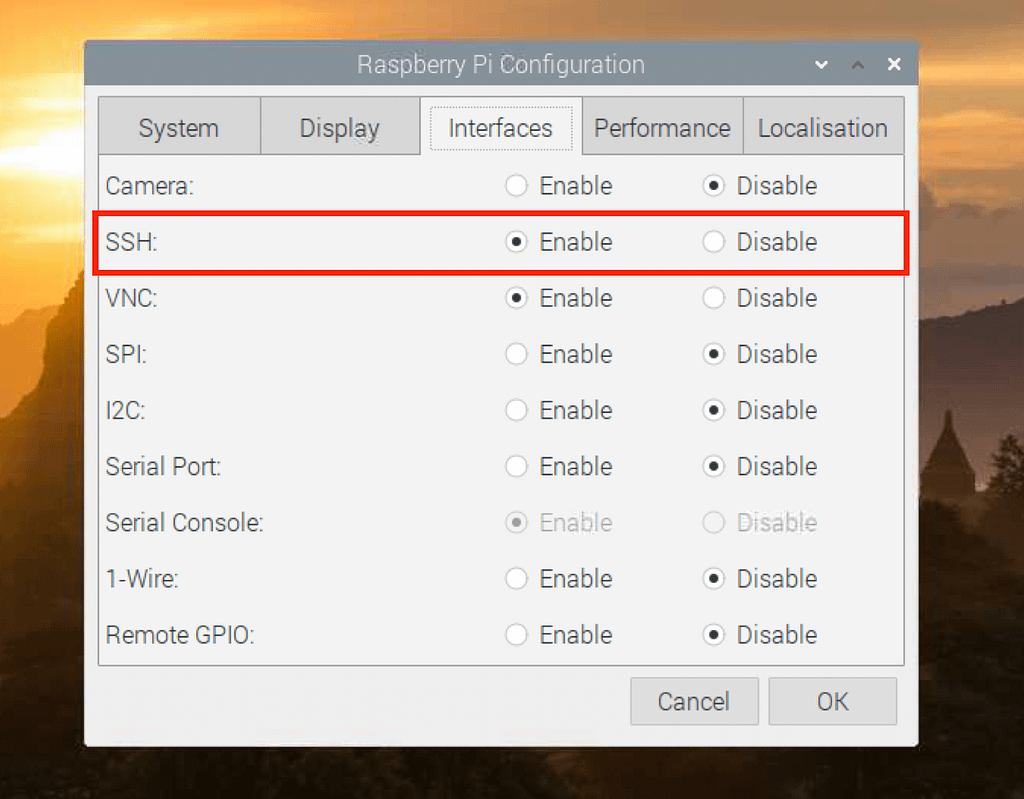Mastering RemoteIoT VPC SSH Raspberry Pi Download Free: The Ultimate Guide
In today's digital age, managing devices remotely has become a necessity for tech enthusiasts and professionals alike. RemoteIoT VPC SSH Raspberry Pi download free options offer a powerful solution to access and control your Raspberry Pi securely from anywhere in the world. This article explores everything you need to know about setting up and optimizing your Raspberry Pi for remote access using SSH within a Virtual Private Cloud (VPC).
Whether you're a beginner or an experienced developer, understanding how to configure a secure remote connection to your Raspberry Pi can significantly enhance your project's functionality. This guide will walk you through the essential steps, tools, and best practices to ensure seamless connectivity while maintaining robust security.
By the end of this article, you'll have a comprehensive understanding of RemoteIoT, VPC configurations, SSH protocols, and how to download and set up your Raspberry Pi for remote access. Let's dive in!
Read also:Lakeside Commodities A Comprehensive Guide To Understanding And Maximizing Your Investment Opportunities
Table of Contents
- What is RemoteIoT?
- Raspberry Pi Overview
- Setting Up a Virtual Private Cloud (VPC)
- Understanding SSH Basics
- Downloading Necessary Software
- Free Options for RemoteIoT VPC SSH
- Implementing Security Measures
- Troubleshooting Common Issues
- Advanced Techniques for Optimization
- Conclusion
What is RemoteIoT?
RemoteIoT refers to the practice of remotely managing and monitoring Internet of Things (IoT) devices. This technology allows users to access their IoT devices, such as Raspberry Pi, from anywhere in the world with an internet connection. By leveraging RemoteIoT, you can perform tasks like data collection, device configuration, and troubleshooting without physical access to the device.
Key Features of RemoteIoT
- Remote Access: Connect to your devices from any location.
- Secure Communication: Utilize encryption protocols to safeguard data transmission.
- Scalability: Manage multiple devices simultaneously with ease.
RemoteIoT is particularly beneficial for developers working on IoT projects that require frequent updates or monitoring. It streamlines the process of device management and reduces the need for on-site intervention.
Raspberry Pi Overview
The Raspberry Pi is a compact, affordable single-board computer designed for hobbyists, educators, and developers. Its versatility makes it ideal for a wide range of applications, from home automation to complex robotics projects. The Raspberry Pi supports various operating systems and can be configured to run server-grade applications, making it a popular choice for remote access setups.
Why Use Raspberry Pi for RemoteIoT?
- Cost-effective solution for IoT projects.
- Highly customizable hardware and software configurations.
- Strong community support and extensive documentation.
With its small form factor and low power consumption, the Raspberry Pi is perfect for deploying in remote locations where traditional desktop computers would be impractical.
Setting Up a Virtual Private Cloud (VPC)
A Virtual Private Cloud (VPC) provides a secure and isolated environment for hosting your Raspberry Pi in the cloud. By setting up a VPC, you can control access to your device and ensure that only authorized users can connect via SSH.
Steps to Configure a VPC
Choose a Cloud Provider: Select a reputable cloud service provider such as AWS, Google Cloud, or Microsoft Azure.
Read also:
- Panama City Beach Hyatt Place Your Ultimate Coastal Retreat
Create a VPC: Use the provider's dashboard to create a new VPC with specified IP ranges and subnets.
Set Up Security Groups: Define rules that allow SSH connections while blocking unauthorized traffic.
Deploy Raspberry Pi: Connect your Raspberry Pi to the VPC by configuring its network settings.
Proper VPC configuration is crucial for maintaining the security and stability of your remote IoT setup.
Understanding SSH Basics
Secure Shell (SSH) is a cryptographic network protocol used for secure communication between devices. It is the backbone of remote access for Raspberry Pi and other Linux-based systems. SSH encrypts all data transmitted between the client and server, ensuring that sensitive information remains protected.
Benefits of Using SSH
- Data encryption for secure communication.
- Supports file transfers via SCP and SFTP.
- Facilitates remote command execution and system administration.
For Raspberry Pi users, SSH enables secure remote access to the command line interface, allowing for efficient device management without the need for a physical display or keyboard.
Downloading Necessary Software
Before setting up remote access for your Raspberry Pi, you'll need to download and install the required software. This includes the Raspberry Pi OS, SSH client, and any additional tools needed for VPC integration.
Free Software Options
- Raspberry Pi OS: The official operating system for Raspberry Pi devices, available for free download from the official website.
- Putty: A popular SSH client for Windows users, available as a free download.
- OpenSSH: A versatile SSH server and client suite pre-installed on most Linux distributions.
Ensure that you download software from trusted sources to avoid security risks associated with malicious software.
Free Options for RemoteIoT VPC SSH
Many cloud providers offer free tiers for their services, making it possible to set up a RemoteIoT VPC SSH Raspberry Pi environment without incurring significant costs. These free options are ideal for hobbyists and small-scale projects.
Popular Free Cloud Services
- AWS Free Tier: Provides one year of free access to AWS services, including EC2 instances and VPC setup.
- Google Cloud Free Tier: Offers a limited amount of free usage per month for various services.
- Microsoft Azure Free Tier: Includes free access to select services for the first 12 months.
While these free options may have limitations, they are sufficient for most personal and educational projects involving Raspberry Pi and RemoteIoT.
Implementing Security Measures
Security should be a top priority when setting up remote access for your Raspberry Pi. Implementing robust security measures will protect your device from unauthorized access and potential cyber threats.
Best Practices for Security
- Use Strong Passwords: Avoid using common passwords and enable two-factor authentication where possible.
- Disable Root Login: Restrict SSH access to non-root users to minimize the risk of privilege escalation.
- Regular Updates: Keep your Raspberry Pi OS and all installed software up to date with the latest security patches.
By following these best practices, you can significantly enhance the security of your RemoteIoT VPC SSH setup.
Troubleshooting Common Issues
Even with careful planning and setup, issues can arise when configuring RemoteIoT VPC SSH for Raspberry Pi. Below are some common problems and their solutions:
Common Issues and Solutions
- Connection Refused: Ensure that the SSH service is running and that firewall rules allow incoming connections.
- Authentication Failed: Verify that the username and password are correct and that SSH keys are properly configured.
- Network Connectivity: Check that the Raspberry Pi is connected to the internet and that the VPC settings are correctly configured.
If problems persist, consult the official documentation or seek help from online forums and communities.
Advanced Techniques for Optimization
For users seeking to optimize their RemoteIoT VPC SSH Raspberry Pi setup, advanced techniques can enhance performance and security. These techniques include automating tasks, implementing load balancing, and utilizing containerization technologies like Docker.
Optimization Strategies
- Automate Tasks: Use cron jobs or scripts to automate routine maintenance and monitoring tasks.
- Load Balancing: Distribute incoming traffic across multiple Raspberry Pi devices for improved reliability and performance.
- Containerization: Deploy applications in isolated containers to simplify management and improve resource utilization.
By adopting these advanced techniques, you can maximize the efficiency and functionality of your RemoteIoT setup.
Conclusion
In conclusion, mastering RemoteIoT VPC SSH Raspberry Pi download free options opens up a world of possibilities for remote device management and IoT project development. By following the guidelines and best practices outlined in this article, you can set up a secure and efficient remote access environment for your Raspberry Pi.
We encourage you to share your experiences and insights in the comments section below. Additionally, feel free to explore other articles on our site for more tips and tutorials on Raspberry Pi and IoT technologies. Together, let's continue to push the boundaries of what's possible with remote computing and IoT!

